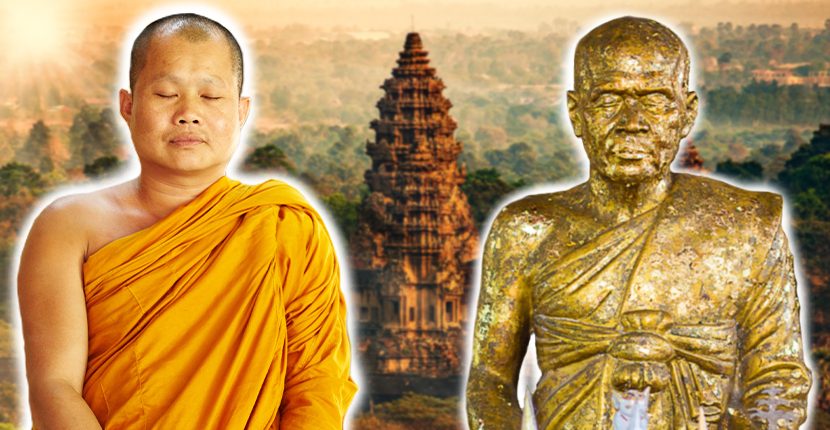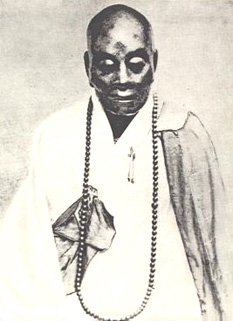
KHÔNG GÌ HẠNH PHÚC HƠN TÂM AN TỊNH (1)
LINK:https://phtq-canada.blogspot.com/2020/04/self-mummification.html
Đây chỉ là tài liệu tham khảo.
Cốt tủy của đạo Phật không quan trọng tấm thân tứ đại, dù khi con người còn sống trên thế gian hay không. Chẳng có gì linh thiêng huyền bí hay phép lạ nào cả.
Cốt tủy của đạo Phật là: tu tâm dưỡng tánh.

https://www.thevintagenews.com/2018/04/25/selfmummification/
The Bizarre and Unappetizing Buddhist Monk Practice of Self-Mummification

As Buddhism spread across Asian
countries over the past centuries, various forms of Buddhist schools and
teachings emerged as the religion came into contact with many local
cultures. Some Buddhist monks observed that all life is sacred, and
their school taught followers to move around the temple with the utmost
caution, that they should not even by accident squash an ant or any
other tiny insect. Other schools and teachings have, however, adopted
fairly bizarre beliefs and practices, like learning how to self-mummify
in order to achieve an advanced level of enlightenment. This did not produce your typical mummy such as those embalmed in ancient Egypt.
Self-mummifying was attempted, most
notably in the Japanese Yamagata Prefecture in the north of the country,
starting in the 11th century and lasting until the 19th century, when
the Japanese government ruled this was a form of assisted suicide. But
there were still devotees of the process who self-mummified, even after
there was an active decree against that.
The obscure practice first saw the light
of day thanks to a monk known as Kūkai, the founder of the Buddhist
Shingon school during the early 9th century. This was an esoteric
school, more or less. Two centuries after Kūkai died, his hagiography
surfaced and said that he had not passed away but rather entombed
himself in a special meditative state. Upon his reemergence, millions of
years in the future, he would help others ascend into the state of
nirvana, the hagiography reportedly claimed.
Yamagata Shingon monks are today counted
among the ones who most frequently attempted to become living Buddhas,
in their own flesh. The monks subjected themselves to severity before
entering the meditative state in their tombs, where their lives ceased
and some of them turned into mummies–Sokushinbutsu.

Luang Phor Daeng Payasilo, the mumified monk, at Wat Khunaram, Ko Samui, southern Thailand. Photo:Per Meistrup CC BY-SA 3.0
Before they were to self-mummify, there
were steps to take and cycles to fulfill. For instance, in the
beginning, each devotee followed a rigid raw diet to prepare the body
for the process. The first special eating ritual lasted for a thousand
days and was followed by another cycle of a thousand days, all designed
to dehydrate the body and, more importantly, to eliminate all bacteria
and maggots that feast in our remains as we decompose after death.
The Buddhist monks did not see this
process as anything like suicide, rather they saw it as the pathway to
ultimate enlightenment. If they were to achieve the Sokushinbutsu form
after the preparation stages, if their corpse was found intact a
thousand days after their death, this meant that the spiritual quest had
been accomplished.
So, the preparation began with a limited
diet in which monks were allowed only water, fruits, nuts, and seeds
that were collected in the forests and mountains. Such a raw diet choice
helped the body lose bulk and muscle. In the next phase of the
preparation, they proceeded with consuming things like roots and bark
from pine trees. A tea made from urushi, the toxic sap of lacquer tree, was also consumed. Take a closer look with this video:
https://youtu.be/5S_GLjrKc0U
The tea especially helped cleanse the
body’s internal organs of any parasites, to prevent the disintegration
of the corpse as the time approached. When the preparation process was
completed, the monks placed themselves alive into their tombs, which
merely had enough room to fit them sitting in the lotus pose. In the
tombs, the monk had a tube that allowed them to breathe, plus a bell
which they rang each day to notify the temple they are still not dead.
As soon as ringing halted, it was assumed the devotee had passed. People
opened the tomb, removed the air tube, and sealed the site for another
thousand days.
After that, the graves were reopened and
the monks were checked for signs of decay. Some sources claim there are
about 24 “surviving” Living Buddhas, whose mummification process was
confirmed a success. Others say there were many more but they were lost
in the maze of time. If a mummy was found inside a tomb, it was taken
out of it, dressed in lavish robes, and displayed in temples for
worship. The rest of the monks whose remains had disintegrated were paid
a more simple tribute; they were left entombed but were still praised
for their endurance, resilience, and effort.

Sokushinbutsu (mummy) of Huineng, in Shaoguan, Guangdong, China.
Just a portion of the existing monk
mummies can be seen in temples across Japan. And one of the most praised
mummies of all is that of Shinnyokai-Shonin, who lived from 1687 until
1783. Shinnyokai subjected himself to becoming a Sokushinbutsu when he
turned 96 and allegedly after 42 days of total abstinence. He rests in a
lotus position and is situated in a separate shrine at the Dainichi-Boo
Temple, a site associated with monks who pursued self-treatment.
Shinnyokai is dressed in an embellished garment that is regularly
changed during special rituals. His old garments are used to produce
amulets that are then sold to visitors who come to the temple.
The last person to accomplish Sokushinbutsu did
so after the government banned this form of brutal self-treatment in
the latter years of the 19th century. It concerns a monk named Bukkai
who died in 1903, and who, as he subjected himself to the enlightenment
process, was called a madman by contemporaries. His remains were kept
untouched until the early 1960s, when university researchers finally
proceeded to inspect him, only to find them to be in an exceptionally
well-preserved condition.
Today, Sokushinbutsu is
a thing of the past, but the interest in seeing one has never ceased,
and visitors flock to those temples storing a mummy. Besides Japan,
cases, where priests have willingly subjected themselves to
mummification, have been recorded in other countries such as China and
India.
Jamie Clegg
Martha M. Sands I'm sure they'd feel the same way about you.



19 Comments
Sort by
Oldest
Päivi Raulamo
Can't
they wait until they are dead to get on that mummification? A tad
greedy to get ahead of things like that don't you think? And what a
waste of life that could be used for some general good instead.
Isreal Ogbonnaya
I share in your grief ma. It is sad to see to see the kind of torture
these monks subject themselves to all in abid to achieve relevance in
the higher realm. Now my ever pending question is this, what if there is
no other realm? What if we all reincarnate?
Vinko Oroz
Isreal
Ogbonnaya yea but once you hit the stage of knowing you can halt the
rebirth and enter realms. If there is no higher realm there is no
rebirth, cause it would be pointless.
Rick Gomez
I
have actually been to Yamagata and have personally seen this. To talk
to the monks at the temple is very enlightening. We took part in a
ceremony and were invited to pay tribute to the living Buddha. It was
very much a once in a lifetime experience.
Fucking weirdos





















